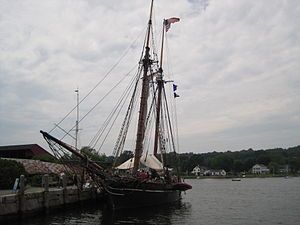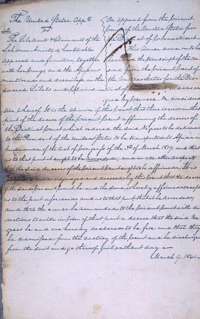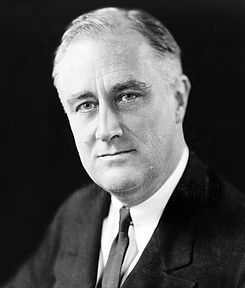This is your morning Open Thread. Pour your favorite beverage and review the past and comment on the future.
Find the past “On This Day in History” here.
March 11 is the 70th day of the year (71st in leap years) in the Gregorian calendar. There are 295 days remaining until the end of the year.
On this day in 1851, The first performance of Rigoletto by Giuseppe Verdi takes place in Venice.
Rigoletto is an opera in three acts with the Italian libretto written by Francesco Maria Piave based on the play Le roi s’amuse by Victor Hugo. It is considered by many to be the first of the operatic masterpieces of Verdi’s middle-to-late career.
Verdi was commissioned to write a new opera by the La Fenice opera house in Venice in 1850, at a time when he was already a well-known composer with a degree of freedom in choosing the works he would prefer to set to music. He then asked Piave (with whom he had already created Ernani, I due Foscari, Macbeth, Il Corsaro and Stiffelio) to examine the play Kean by Alexandre Dumas, père, but he felt he needed a more energetic subject to work on.
Verdi soon stumbled upon Victor Hugo’s Le roi s’amuse. He later explained that “It contains extremely powerful positions … The subject is great, immense, and has a character that is one of the most important creations of the theatre of all countries and all Ages”. It was a highly controversial subject and Hugo himself had already had trouble with censorship in France, which had banned productions of his play after its first performance nearly twenty years earlier (and would continue to ban it for another thirty years). As Austria at that time directly controlled much of Northern Italy, it came before the Austrian Board of Censors. Hugo’s play depicted a king (Francis I of France) as an immoral and cynical womanizer, something that was not accepted in Europe during the Restoration period.
From the beginning, Verdi was aware of the risks, as was Piave. In a letter which Verdi wrote to Piave: “Use four legs, run through the town and find me an influential person who can obtain the permission for making Le Roi s’amuse.” Correspondence between a prudent Piave and an already committed Verdi followed, and the two remained at risk and underestimated the power and the intentions of Austrians. Even the friendly Guglielmo Brenna, secretary of La Fenice, who had promised them that they would not have problems with the censors, was wrong.
At the beginning of the summer of 1850, rumors started to spread that Austrian censorship was going to forbid the production. They considered the Hugo work to verge on lèse majesté, and would never permit such a scandalous work to be performed in Venice. In August, Verdi and Piave prudently retired to Busseto, Verdi’s hometown, to continue the composition and prepare a defensive scheme. They wrote to the theatre, assuring them that the censor’s doubts about the morality of the work were not justified but since very little time was left, very little could be done. The work was secretly called by the composers The Malediction (or The Curse), and this unofficial title was used by Austrian censor De Gorzkowski (who evidently had known of it from spies) to enforce, if needed, the violent letter by which he definitively denied consent to its production.
In order not to waste all their work, Piave tried to revise the libretto and was even able to pull from it another opera Il Duca di Vendome, in which the sovereign was substituted with a duke and both the hunchback and the curse disappeared. Verdi was completely against this proposed solution and preferred instead to have direct negotiations with censors, arguing over each and every point of the work.
At this point Brenna, La Fenice’s secretary, showed the Austrians some letters and articles depicting the bad character but the great value of the artist, helping to mediate the dispute. In the end the parties were able to agree that the action of the opera had to be moved from the royal court of France to a duchy of France or Italy, as well as a renaming of the characters. In the Italian version the Duke reigns over Mantova and belongs to the Gonzaga family: the Gonzaga had long been extinct by the mid-19th Century, and the Dukedom of Mantova did not exist anymore, so nobody could be offended. The scene in which the sovereign retires in Gilda’s bedroom would be deleted and the visit of the Duke to the Taverna (inn) was not intentional anymore, but provoked by a trick. The hunchback (originally Triboulet) became Rigoletto (from French rigolo = funny). The name of the work too was changed.
For the première, Verdi had Felice Varesi as Rigoletto, the young tenor Raffaele Mirate as the Duke, and Teresina Brambilla as Gilda (though Verdi would have preferred Teresa De Giuli Borsi). Teresina Brambilla was a well-known soprano coming from a family of singers and musicians; one of her nieces, Teresa Brambilla, was the wife of Amilcare Ponchielli.
The opening was a complete triumph, especially the scena drammatica, and the Duke’s cynical aria, “La donna è mobile”, was sung in the streets the next morning.

 On this day in 1959,
On this day in 1959,  On 1 March 1959, an unusual invitation to attend a theatrical performance at the Chinese military headquarters outside Lhasa was extended to the Dalai Lama. The Dalai Lama, at the time studying for his
On 1 March 1959, an unusual invitation to attend a theatrical performance at the Chinese military headquarters outside Lhasa was extended to the Dalai Lama. The Dalai Lama, at the time studying for his  On 12 March, protesters appeared in the streets of Lhasa declaring Tibet’s independence. Barricades went up on the streets of Lhasa, and Chinese and Tibetan rebel forces began to fortify positions within and around Lhasa in preparation for conflict. A petition of support for the armed rebels outside the city was taken up, and an appeal for assistance was made to the Indian consul. Chinese and Tibetan troops continued moving into position over the next several days, with Chinese artillery pieces being deployed within range of the Dalai Lama’s summer palace, the Norbulingka. On 15 March, preparations for the Dalai Lama’s evacuation from the city were set in motion, with Tibetan troops being employed to secure an escape route from Lhasa. On 17 March, two artillery shells landed near the Dalai Lama’s palace, triggering his flight into exile. On 19 March the Chinese started to shell the Norbulingka, prompting the full force of the Uprising. According to the freetibet website, on 21 March 800 shells rained down on the palace, including the shelling of the Norbulingka and Lhasa’s major monasteries, slaughtering thousands of Tibetan men, women and children. Combat lasted only about two days, with Tibetan rebel forces being badly outnumbered and poorly armed.
On 12 March, protesters appeared in the streets of Lhasa declaring Tibet’s independence. Barricades went up on the streets of Lhasa, and Chinese and Tibetan rebel forces began to fortify positions within and around Lhasa in preparation for conflict. A petition of support for the armed rebels outside the city was taken up, and an appeal for assistance was made to the Indian consul. Chinese and Tibetan troops continued moving into position over the next several days, with Chinese artillery pieces being deployed within range of the Dalai Lama’s summer palace, the Norbulingka. On 15 March, preparations for the Dalai Lama’s evacuation from the city were set in motion, with Tibetan troops being employed to secure an escape route from Lhasa. On 17 March, two artillery shells landed near the Dalai Lama’s palace, triggering his flight into exile. On 19 March the Chinese started to shell the Norbulingka, prompting the full force of the Uprising. According to the freetibet website, on 21 March 800 shells rained down on the palace, including the shelling of the Norbulingka and Lhasa’s major monasteries, slaughtering thousands of Tibetan men, women and children. Combat lasted only about two days, with Tibetan rebel forces being badly outnumbered and poorly armed. On this day in 1841,
On this day in 1841, 
 On this day in 1911,
On this day in 1911,  Following the
Following the  On this day in 1976, a group of 600 civil rights marchers are forcefully broken up in Selma, Alabama. This day would be remembered in the Civil Rights Movement as
On this day in 1976, a group of 600 civil rights marchers are forcefully broken up in Selma, Alabama. This day would be remembered in the Civil Rights Movement as  Bevel’s initial plan was to march to Montgomery to ask Governor
Bevel’s initial plan was to march to Montgomery to ask Governor 


 In this day in 1933, at the height of the Great Depression,
In this day in 1933, at the height of the Great Depression,  On this day in 1887,
On this day in 1887,  On this day in 1836, the
On this day in 1836, the  The Republic of Texas was created from part of the Mexican state
The Republic of Texas was created from part of the Mexican state
Recent Comments